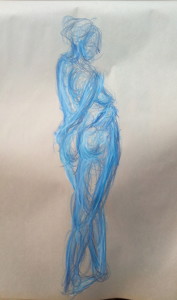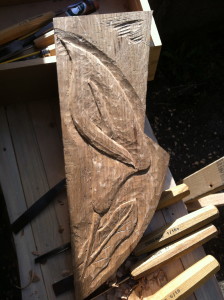I’ve been going to a life drawing class lately.
(You can tell I’m years out of practice…)
In addition to that, I’ve been doing a bit of wood carving. (decorative hanging knees for the boat…)
Both of these endeavors have started me sketching again. while I’ve been at it, I’ve been thinking about what makes sketching a pleasurable way to work out problems, and whether or not that experience can successfully be translated to a touchscreen device. Last year I did a considerable amount of work on a storytelling application, only to realize that at the time it was a bit beyond my capacity. I have somewhat more manageable idea now, based on the series of sketches I did as preliminaries to the wood carving. I realize that having to draw to a brief, or at least within a certain set of restrictions involves a fair amount of repetition. and performing repetitive tasks is what computers are all about… so watch this space. I may need a beta tester.
though realistically, this isn’t going to happen very quickly, I have a hobby…









